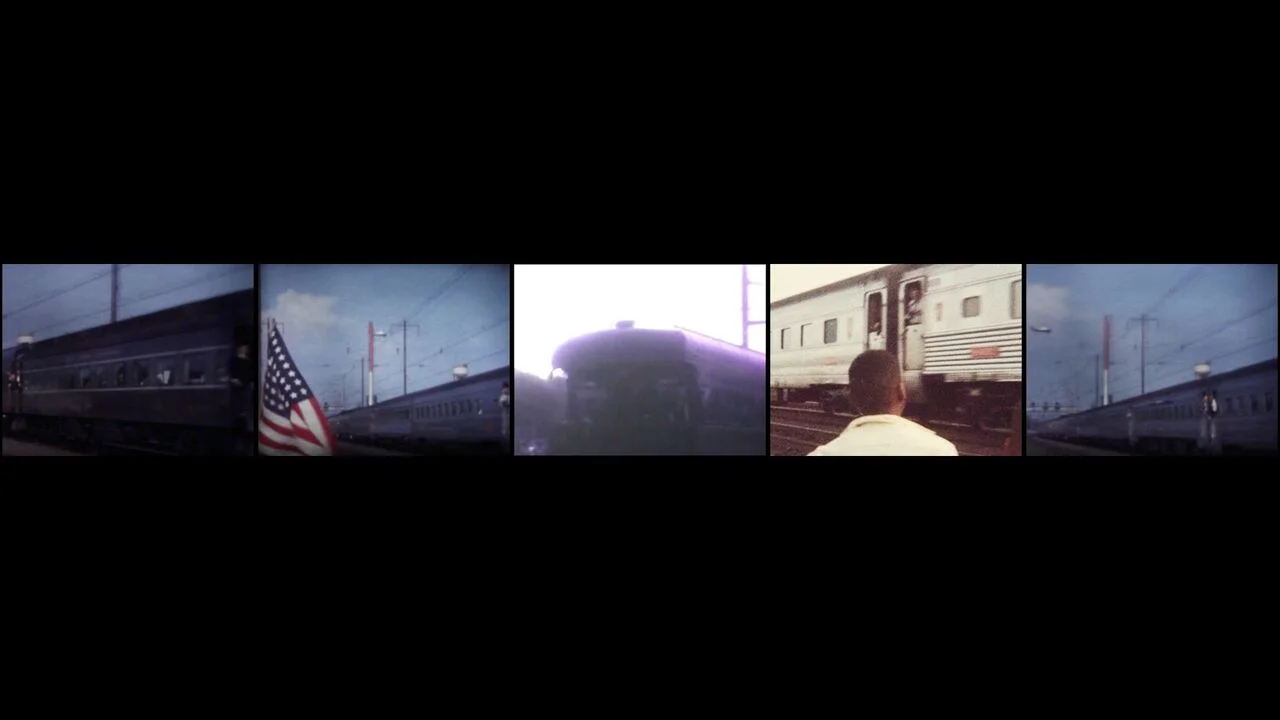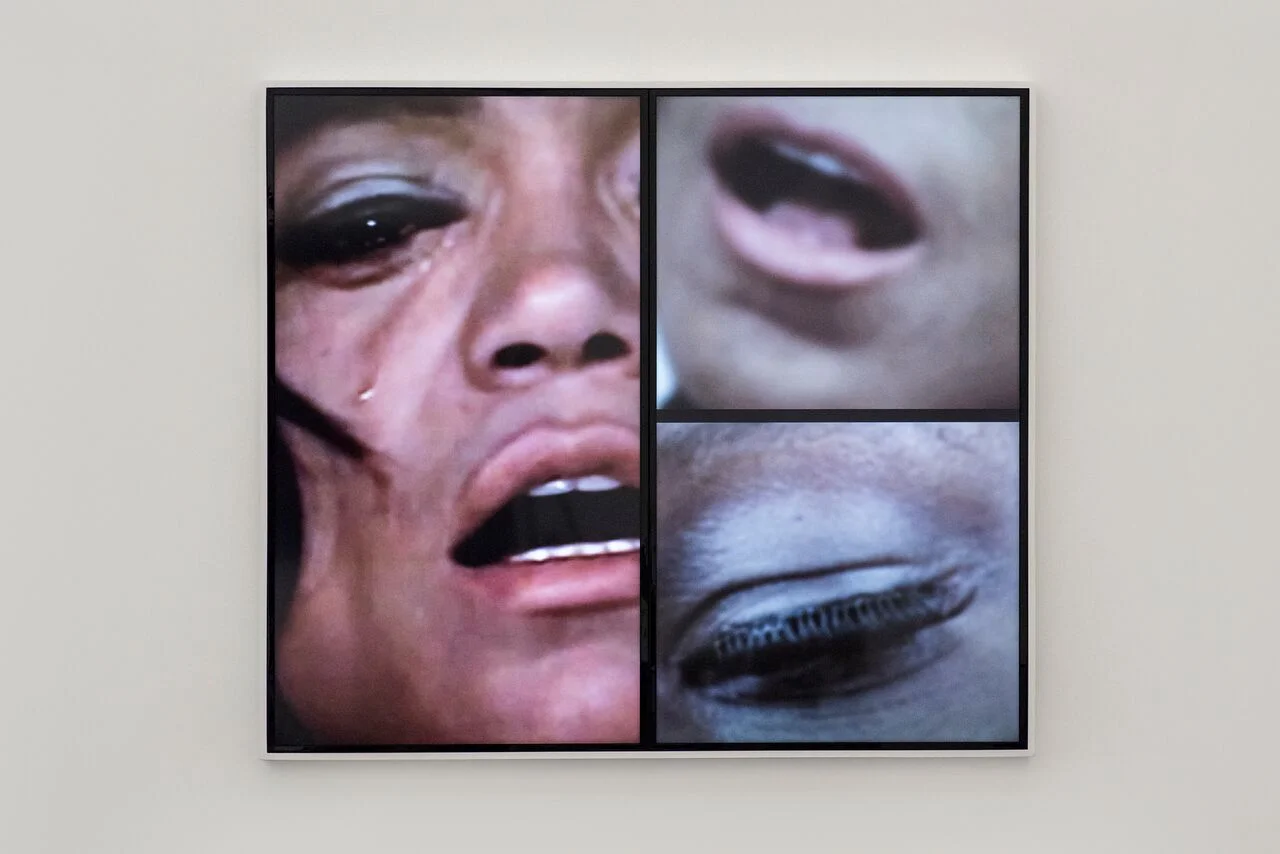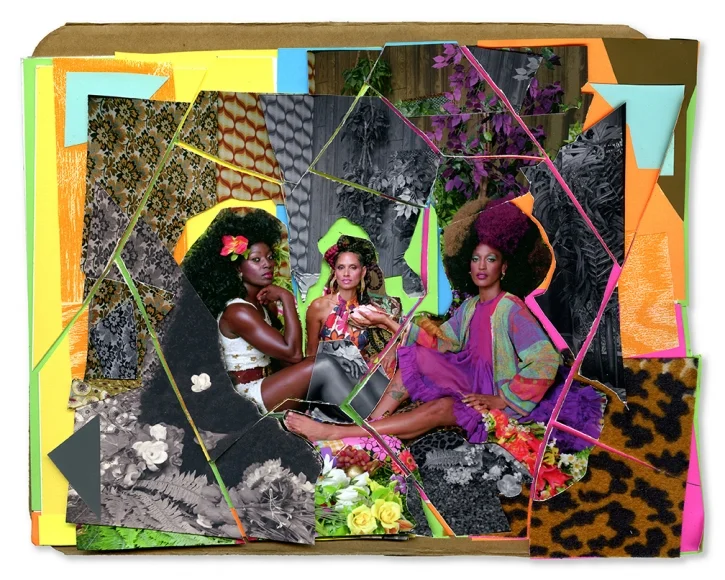Exhibition Review: ICP Explores Photography in Four New Exhibitions
Geta Brătescu, Autoportret în oglindă [Self-Portrait in the Mirror],2001. © Geta Brătescu, Courtesy the artist; Ivan Gallery, Bucharest; Hauser & Wirth. Photo: Ștefan Sava.
By Emma Coyle
The artist Eliot Erwitt himself attended the media preview of The International Center of Photography (ICP) Museum’s most recent exhibition, sitting next to a group of photographers and journalists discussing the benefits of cameras from the 1980s and gifting each other rolls of film freshly produced in Russia. On the table sat a display copy of Robert F Kennedy Funeral Train-The People’s View, the printed by product of Rein Jelle Terpstra’s–who was also in attendance–film installation that attempts to “hold onto a pivotal moment in America history”.
The ICP museum opens four new exhibitions this May showing an amazing breadth of work from gelatin silver prints to contemporary photographers. The incoming summer cycle is the most ambitious exhibition to date held at the museum. It feels almost like a walk through history starting in the early 20th century, working our way through the 50s and the 60s here in America, and ending up in the modern day, with a group show entitled Multiply, Identify, Her.
Walking through the museum the first exhibition, entitled Henri Cartier-Bresson: The Decisive Moment, is focused on the photographer and his photobook, often considered biblical to photographers and one of photography’s important works of the 20th century. The prints hanging on the walls are impossible to find elsewhere, only in this exhibition and in Montmartre, and these were Cartier-Bresson’s personal copies of the work. The photographs are hung in order of his book, The Decisive Moment, and show his disinterest in journalism even as he took pictures of some of the more momentous historical moments of the time, including the death of Ghandi. He preferred to create the “fantasy of pure fiction” from real events. There is a beautiful creamy quality to the photos with a yellow tinge making the subjects warm and welcoming even in the harshest circumstances. The collection includes gelatin silver prints, personal letters, and copies of his publications.
Elliott Erwitt, Children on Beelen Street, Pittsburgh, PA, October 1950.
© Elliott Erwitt/Magnum Photos, Courtesy of Carnegie Library of Pittsburgh
Elliott Erwitt,Section around Tenth Street Bridge across Monongahela River, Pittsburgh, PA, 1950. © Elliott Erwitt/Magnum Photos, Courtesy of Carnegie Library of Pittsburgh
Entering Elliot Erwitt: Pittsburg 1950, a collection of negatives discovered at Carnegie Library in 2011, the photographer greeted guests by saying “thanks for showing up” and it is a clear indication of the type of quiet observational style evident in his work. In one picture Erwitt’s face is reflected in a car window. He described the four months spent taking the pictures on assignment by Roy Stryker as a “unique time”. The lack of boundaries for the assignment helped create this masterful collection of images taken while the photographer was only twenty- two.
Rein Jelle Terpstra, Still from The People’s View(2014–18); courtesy Rein Jelle Terpstra
In the basement of the museum a darkened room is the home of Rein Jelle Tempstra’s RFK Funeral Train–The People’s View, a collection of vernacular photographs and home movies playing on five large screens that was created in response to Paul Fusco’s images of the funeral taken from the train itself. Tempstra’s images collected over four years show the point of view of those who came to watch the train pass as it was announced in each city it went through. As the images populate the screens the sound of the train plays as it passed from one screen to another in multiple home movies capturing slightly different angles. Sometimes lines match up between screens, other times all the same image is repeating and deepening the moment captured. These everyday photographs from 1968 give a more nuanced version of events and reference a contemporary way of handling historical material.
Henri Cartier-Bresson, The Decisive Moment (Simon & Schuster, 1952), p. 39, Behind the Gare St.Lazare, Place de l'Europe, Paris, France, 1932. © Henri Cartier-Bresson/Magnum Photos
Taking up the largest part of the lower level at ICP, Multiply, Identify, Her is a collection of twenty-two works by a group of ten women artists who are aged ninety-two to thirty-one focusing on an investigation of identity. The first piece seen when entering the space is Autoportret in oglinda by Geta Bratescu which is in part a mirror. As each person looks into the image they create a college with their own image and the artist’s features that have layered onto the surface. Neither face is resolved. The images found in this exhibition have a historically nineties feminist point of view where women artists were interested in representing themselves directly in photography and film and then add layers of change and representation. Each artist has their own path apparent in the exhibition but also the show is thematically connected whether working with AI or collage.
This masterful range of work will be open at The International Center of Photography Museum from May 23rd to September 2nd.
Mickalene Thomas, Angelitos Negros (detail), 2016. © Mickalene Thomas, Courtesy the artist and Artists Rights Society (ARS), New York



![Geta Brătescu, Autoportret în oglindă [Self-Portrait in the Mirror],2001. © Geta Brătescu, Courtesy the artist; Ivan Gallery, Bucharest; Hauser & Wirth. Photo: Ștefan Sava.](https://images.squarespace-cdn.com/content/v1/5702ab9d746fb9634796c9f9/1527011615641-C8Z8JMJCAA81T0W95MCT/1_Geta+Bratescu_preview.jpeg)









